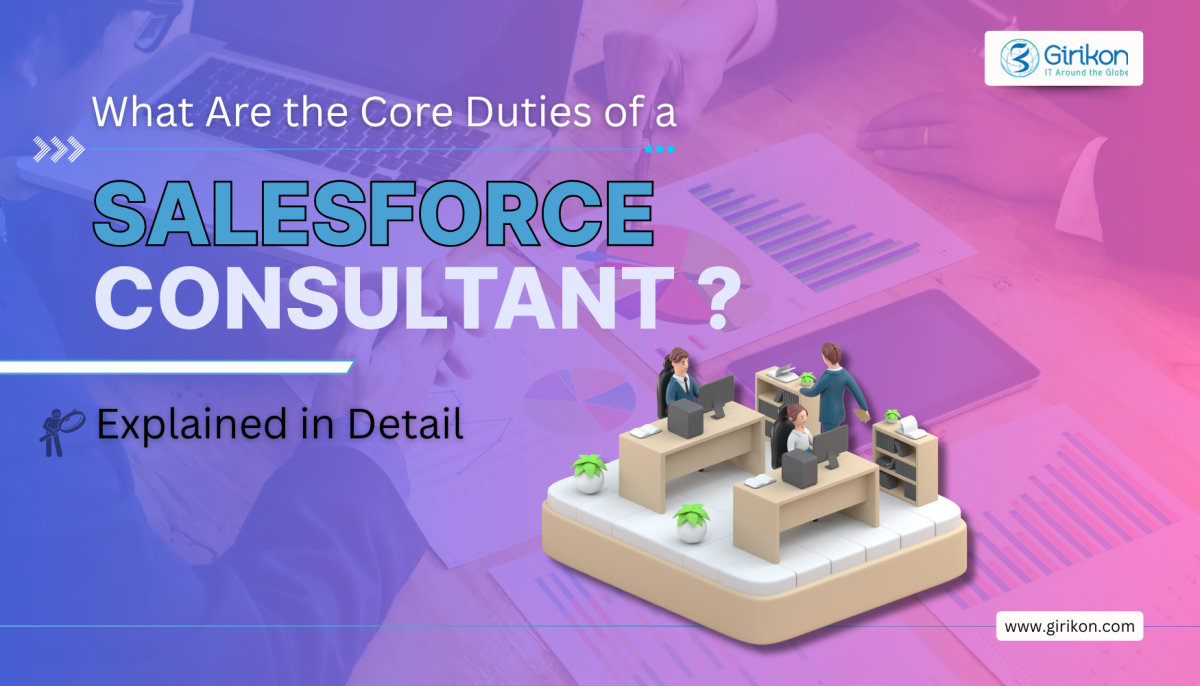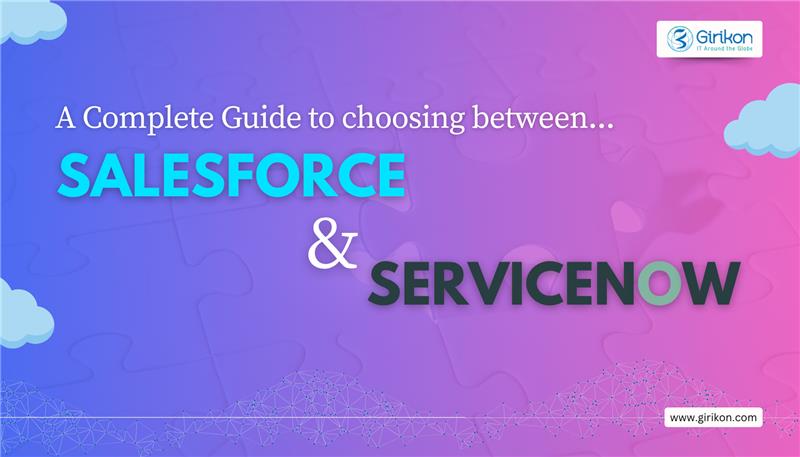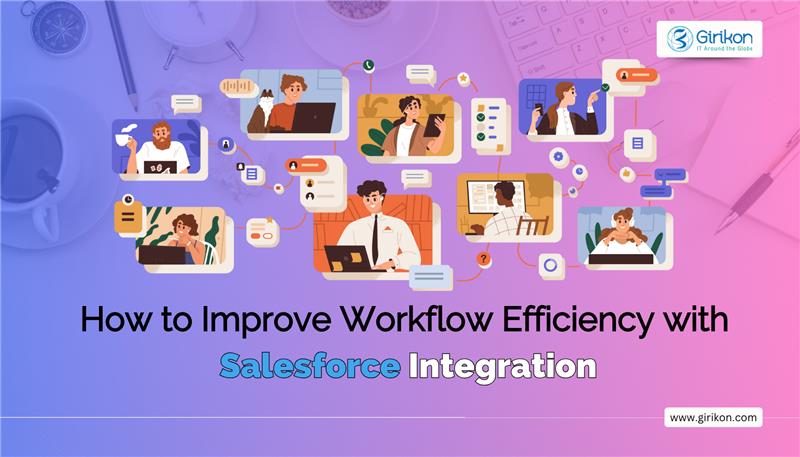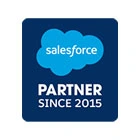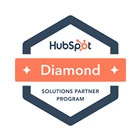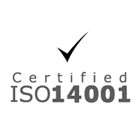Our Blogs
Salesforce may be a powerful and trending solution—but unlocking its full potential requires more than just turning it on. That’s where the Salesforce consulting company appears and acts as strategic advisors, hands-on problem solvers, and system architects who ensure that Salesforce is designed, implemented, and optimized in a way that drives real business value. Read through the guide to learn what their core duties include.
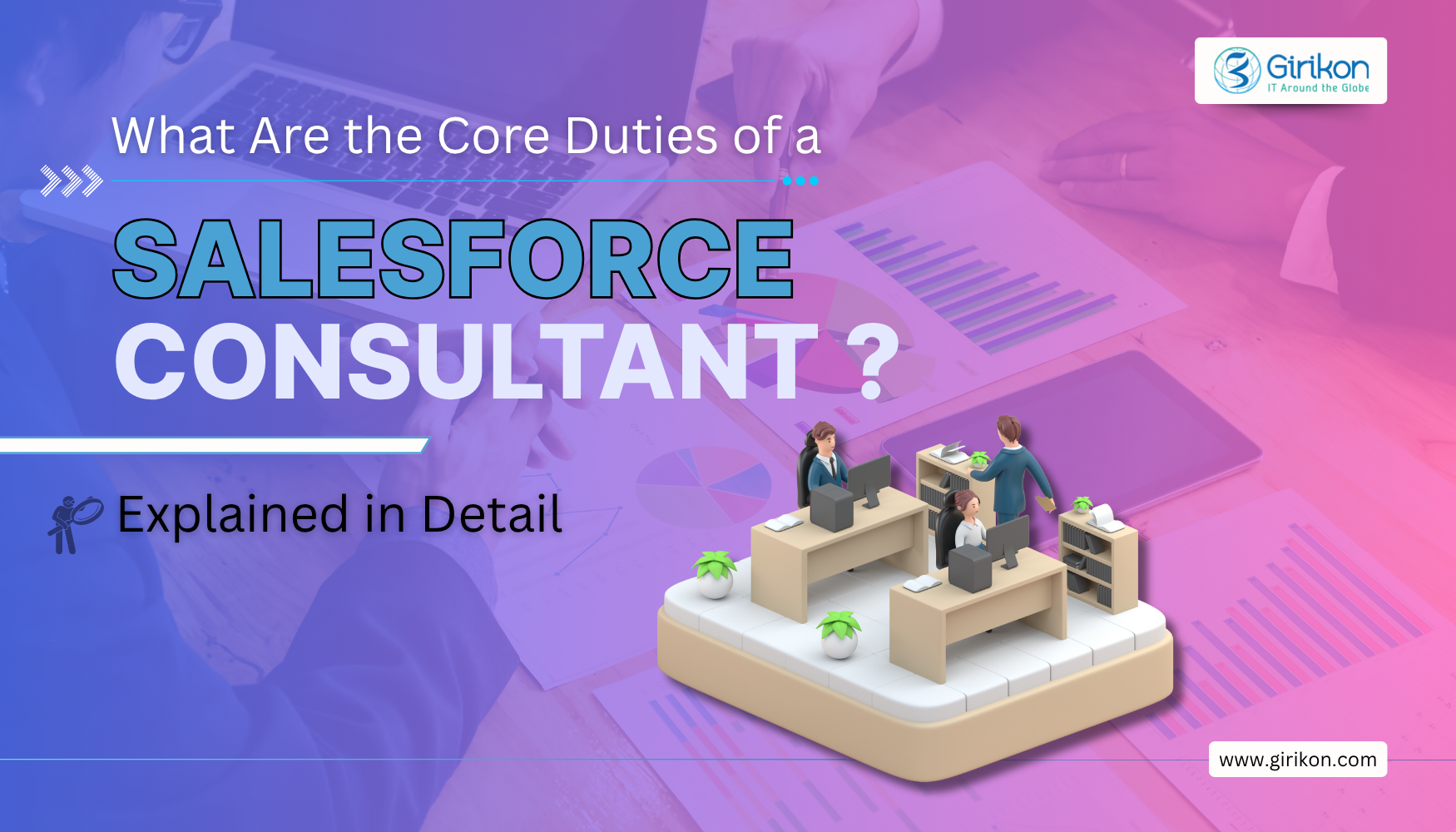
Core Duties of a Salesforce Consultant
1.Discovery & Requirement Gathering
Prior to embarking on any actions towards Salesforce implementation, it is necessary to first identify the core need of the business. Hence, without a thorough discovery phase, a Salesforce implementation may lack direction. This phase calls for a Salesforce consultant to work closely with end users, department heads, and managers. In that way, the consultants learn how this particular organization works, what challenges it faces, and how successful implementation helps it resolve those problems. Below is what this step encompasses:
- Workshops and Interviews
Consultants meet with different teams like marketing, service, IT, and sales to gather input. This meeting helps them learn about manual processes, current challenges, and wish list features directly from the people who are going to use Salesforce.
- Mapping Current Workflows and Pain Points
In this step, consultants analyze everything about how things happen in a business, how leads are tracked, and how customer service cases are handled. They identify gaps, inefficiencies, or other bottlenecks that Salesforce can fix.
- Defining Success Criteria for the Implementation
Instead of getting Salesforce up and running, the step defines how success looks like, i.e., faster lead conversions, improved customer support response time, and better visibility into sales pipelines.
2.Solution Design
Now that the discovery and requirement gathering is complete, it’s time to turn the insights collected from the first step into a real and workable plan. And how would Salesforce consultants do it? Well, they put your business needs in one place. This helps them create a tailored blueprint for how Salesforce will be configured to intersect those goals.
Here is what the phase includes:
- Designing System Architecture
The consultants draw the big-picture structure of the Salesforce system including modules like Experience Cloud, Service Cloud, and Sales Cloud. This structure defines the data flow, modules alignment, and third-party tools' connection to ensure security, scalability, and efficiency.
- Recommending the Right Salesforce Products, Editions, and Integrations
Instead of moving with an approach of “one-size-fits-all," the consultants build the customized solution by letting you choose the exact products like Field Service Lightning, Pardot, CPQ. Moreover, they add editions like Professional vs. Enterprise that not just matches your business goals but also comes under the budget. Besides, consultants advise on integrations—how external systems should be connected.
- Crafting a Future-Ready Data Model with Optimized Workflow Integration
At this moment, consultants define the way data must be organized (fields, custom objects, and relationships), and business processes must be automated (lead routing, case escalation, and approval processes). This ensures that Salesforce supports your future growth and current needs without turning out to be a messy and outdated system.
3.Configuration & Customization
Having finalized the design, now it’s time to bring the solution to reality. That’s where Salesforce consultants configure and customize the platform based on your unique business goals so that it perfectly aligns with the objectives.
Set Up Custom Fields, Objects, Page Layouts, and Record Types
- Custom Fields: Beyond what Salesforce provides, this allows you to capture the data you need. For example, you may require a “Service Tier” field on a Case and a “Vendor Type” field on an Account.
- Custom Objects: If your business tracks data that doesn’t fit into Salesforce’s standard objects like Opportunities, Accounts, and Leads, a consultant can create entirely new ones—Projects, Subscriptions, and Assets.
- Record Types: It is useful only when managing different processes for the same kind of data—like handling renewal sales and new sales separately—without mixing things up.
- Page Layouts: This controls what users view and interact with, making sure users see only fields and features relevant to them.
Deploy automation features by configuring flows, approval routes, and process builders
- Flows: These are dynamic and visual automation tools, useful when you need to process case resolution, quote approval, and onboarding.
- Approval Rules: Based on predefined logic, it automates the approval of certain records like large discount approvals and high value opportunities, thus keeping decision-making consistent.
- Process Builders: Used for automating certain tasks like triggering notifications, sending emails, and updating fields.
Customize Dashboards, User Interfaces, and Reports
- Dashboards: Bring in summaries of different business metrics. For example, a support team might get to learn about open cases by priority, meanwhile, a sales manager sees pipeline by stage.
- User Interface (UI) Customization: This includes optimization of page layouts, navigation, and buttons for usability and clarity—so users work seamlessly with Salesforce.
- Reports: Dynamic reports allow users to dive deep into bottlenecks, trends and performance, thus helping them improve further and match user needs with KPIs.
4.Integration with Other Systems
Salesforce is no doubt dynamic software—however, it works even more effectively and smarter when it aligns well with the tools your business uses. That is why integration is crucial, connecting Salesforce to your other technology systems and saving team members from wasting time manually copying data and bouncing between platforms.
Integrate marketing, customer service, ERP, or custom app together like
- Marketo, Mailchimp, or HubSpot for marketing
- Custom In-house applications built exclusively for your organization
- Robust ERP solutions to optimize inventory, financial management, and business operations.
- Customer support platforms like ServiceNow and Zendesk
Use APIs, Middleware, or AppExchange Tools for Seamless Data Flow
- APIs serve as the channels through which two systems come in real-time sync with one another.
- Middleware Tools like Dell Boomi, Zapier, and MuleSoft conduct intricate integration and chain multiple apps in one workflow.
- App Exchange Solutions provide pre-built connectors for apps, enabling their customization based on businesses’ unique needs.
5.Data Migration & Management
Transferring a lot of data from an older system is what is required when a company makes a switch from other systems to Salesforce. But here is the catch. Moving data isn’t as simple as just copying and pasting—because it requires planning, precision, and care. This ultimately results in turning data all clean, secured, and organized.
Cleanse, Map, and Transform Data
- Cleanse: Eliminate duplicates, fill in missing information, and resolve incorrect values to prevent data from clogging the system.
- Map: Align old data fields with new Salesforce fields, making your old “Client Name” field mapped to Salesforce’s “Account Name.”
- Transform: Turn one format into another to fit Salesforce's structure.
Consider Data Accuracy, Structure, and Security
- Accuracy: Your records should bring current and updated business information.
- Security: Sensitive data is treated accordingly and is put under access permissions so that only the right people with authorized permission have access to it.
Use Tools like Third-Party Solutions and Data Loader
- Third party tools like Jitterbit and MuleSoft provide advanced features for complex and ongoing migrations.
- Data loader, a Salesforce provided tool helps in bulk uploading, updating, or deleting data for large data sets.
6.User Training & Change Management
Salesforce implementation can be technically perfect, but its adoption will fail if users don’t understand how to use it. That’s where training and change management appears and ensures that the team understands how to use the system confidently. Here is how the consultants make training and change management happen.
Create and Deliver Training Materials and Sessions via Concerning These Factors
- Training Format Types: Create records of video tutorials, live workshops, cheat sheets, FAQs, and interactive walkthroughs.
- Audience-Specific: Tailors the content for various groups like service agents, admins, and sales reps so that what is relevant to a specific user is delivered.
- Real-Life Scenarios: Train on actual business use cases to make learning more relatable and practical.
Design Onboarding Plans for Different User Roles
As consultants are already aware that onboarding is role-based and streamlined, they ensure that different teams learn and understand different things. For instance:
- Sales teams focus on pipeline tracking, quote generation, and lead management.
- Executives require guidance on reports, key metrics, and dashboards.
- Customer support teams are trained in segments like case escalations, SLA, and case handling.
Guide Users on Best Practices and Usage Policies
Flexibility within Salesforce is good—but it can lead to inconsistency if not guided well. That’s where consultants come and set guardrails by:
- Creating documentation that teams can refer to when questions come up.
- Establishing policies like updating frequency, requiring fields, and naming conventions.
- Sharing best practices for task tracking, opportunity updates, and data entry.
7.Post-Implementation Support & Optimization
In the course of the Salesforce platform going live, the best Salesforce consulting company makes sure that it performs well, delivers value, and evolves over time. Here is how they do to ensure this:
- Monitor System Performance: Consultants ensure that the system is functioning well in terms of user activity and accuracy. This way they track reports, integrations, and automation to flag any technical issues that need to be resolved attentively.
- Offer Ongoing Support and Enhancements: They resolve bugs, ensure feature enhancements based on new requests, and consider user support when new hires need onboarding.
- Refine Workflows and Features as Business Needs Evolve: Workflows require adjustments with your company stepping towards growth or launching new products and services. That’s why the best Salesforce consulting company revisits the setup periodically to fine tune your processes.
To Sum it Up!
Together, these Salesforce implementation partners help ensure that Salesforce remains a living and growing part of your business, not just a static system that gets dusty after launch. Not just these consultants provide the foresight and support that ensure successful implementation but also act upon their post-launch responsibilities.
If you want to measure the true return on investment collected with Salesforce’s potential, consider meeting with our experts at the panel. They align Salesforce capabilities with your future business strategy, thus ensuring that the engine of innovation and agility will bring lasting growth and a competitive edge in your industry.

 +1-480-382-1320
+1-480-382-1320 +44-7428758945
+44-7428758945 +61-1300-332-888
+61-1300-332-888 +91 9811400594
+91 9811400594